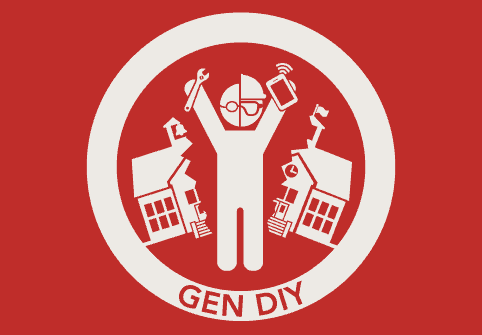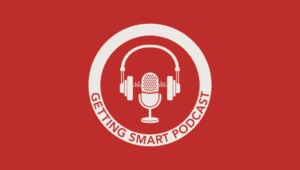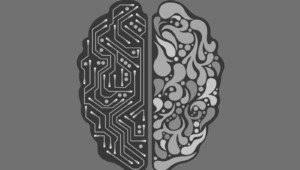Generation Do-It-Yourself (“GenDIY”) Imperatives

This blog first appeared on The Huffington Post.
Xavier goes to high school four hours a day, four days a week in a one-story office building renovated like a college-lounge-cum-tech-startup, complete with couches, high-top tables, free snacks, and classmates sporting big Dre Beats headphones.
River goes to high school from 3 to 6 pm, six days a week, at a computer set up in her parents’ dining nook. Her school day starts after she comes home from the ice rink where she trains up to 8 hours a day, eyes on the Olympics. On day 7, she sleeps.
Philip goes to high school from 6 to 11 am, five days a week, working on his laptop, web conferencing with teachers from the hospital lounge. From noon to 4 each day, he works as an EMT apprentice.
Ashley goes to high school three days a week, sometimes four, five on a very good week, at a storefront in a local strip mall, where she hopes the tutors and special online curriculum will help her make up all the credits she missed in her half-hearted first three years of high school.
Lisette goes to high school whenever she wakes up, wherever in the world she might be. Her parents run an NGO specializing in training women entrepreneurs in emerging markets, and are spending this year circling the globe. Though she sometimes needs the satellite phone and a flashlight to complete her homework, Lisette and her school travel with her.
Kyle goes to an American suburban high school, with 2,499 other students, football fields, and a standard 7-period bell schedule. During 7th period, though, Kyle takes a game design class with students from all over the world and a teacher in New York City. This weekend there’s an online hackathon, starting at 5 pm Friday and ending at noon on Sunday. It’s optional, but Kyle wouldn’t miss it for the world.
These students and more than 2 million like them in the United States are remaking their high school experience to include online learning. Some of them are in purely online schools, often known as e-schools, cyber-schools, or virtual schools, where they connect with their entire curriculum and all their teachers and classmates through the Internet. Others are combining online and face-to-face learning in a “blended” approach that may encompass their whole school day or just a period or two.
The very idea of students doing high school online is a 21st century phenomenon. While Western Governors University and University of Phoenix were launched in the 1990s, it took a few more years for the distance learning trickle-down effect to reach K-12 education. The pioneering Florida Virtual School – which now serves half a million course enrollments to students in brick-and-mortar settings as well as educating several thousand students fully online – was founded in 1997, while the online giant K12, Inc. got its start in 1999. But the full flowering of state-led virtual programs and cyber-charter schools took place between 2000 and 2010, with an echo boom since then of district-based online programs and innovative new blended schools.
Now in its second decade, K-12 online/blended learning is coming into its own both as a credible option for many students and as a prod, making mainstream schools more responsive. One could argue that this form of education is flowering now precisely because it mirrors the imperatives of “Generation DIY.” For example:
- School Choice. Back in the day, “school choice” meant either going to your zoned public high school or forking over tuition for a parochial or private school that differed mainly in uniform color. But choice in education is now a many-splendored thing, with a myriad of different school sizes, themes, designs and philosophies available for selection. In states with public e-schools, even students in the smallest and most remote communities can choose from among as many as 10 different virtual programs, each with its own curriculum and platform. The emergence of blended schools adds another suite of options. These programs actively compete against each other, and all report high levels of “churn” as students move fluidly among them.
- Course-Level Choice. Part of the appeal of online/blended schools is the breadth of curriculum options. No course is too obscure to offer when the teacher can be located almost anywhere and can serve students across multiple schools and programs – hence the availability of Latin IV, AP Calculus BC and Advanced Medical Billing among the 500+ courses in the Connections catalog. But even students in traditional high schools are now gaining access to the entire universe of online offerings through the emergence of state “course choice” programs, which allow students to pick any course from any approved online provider, who then collects a fraction of their per-pupil school funding.
- Personalized Learning Plans. Before online/blended learning, the only students who had documented learner profiles were typically those in special education. Mainstream students basically were handled as one-size-fits-all within an age/grade cohort, with the only differentiation being the kind of tracking that sent some students down the path to college while others dead-ended at Metal Shop and Consumer Math. But because these new forms of technology-facilitated schooling allows for mass customization, every enrolled student now has a personalized plan that takes into account his or her learning style, goals, strengths and weaknesses to drive program level and pacing in a flexible way.
- Role of Data. Though the Target breach and the NSA have made “data” a bit of a dirty word, online/blended learning relies on the constant flow of detailed information about student performance to personalize and individualize for each student. Based on this data flow, students are grouped and regrouped for extra help or extension activities, teachers intervene one-on-one, and school leaders reach out to parents for deeper concerted action to get a student back on track. The students themselves are the biggest data geeks of all, watching their online dashboards like hawks and knowing exactly what score they need to get on the next quiz or essay to bump their running GPA up to the next level.
- Advanced Digital Tools. Online and blended learning by their very nature require deep use of technology. Students in such programs typically have at least one dedicated, school-provided computing device and access to many others, especially in programs with a “Bring Your Own Device” or “BYOD” policy. Students cycle rather nimbly from smartphone to tablet to laptop to flat-screen as they interact with curriculum, communicate with teachers and peers, read texts and present their work. Some blended programs are pushing the technology envelope even further, integrating telepresence robots that look like a cross between a Segway and a vacuum cleaner. They can be driven remotely by a virtual teacher and can bring web conferencing with students to a whole new eyeball-to-onscreen-eyeball level of intimacy.
- Coaching Models. In online and blended learning, the availability of a digital curriculum that students interact with directly means that teachers are no longer the sole deliverers of content. Their role shifts toward personalizing, tutoring, intervening and accelerating for each student based on his or her individual learning needs, as documented by data and observation. To free teachers to go even deeper within specific subject areas, some online/blended high schools have designated “coaches” on staff whose job it is to know their assigned students in a 360-degree way, monitoring their performance across the curriculum and helping them develop the time management and self-advocacy skills they will need for success in college and beyond.
- Blurring of Boundaries. With a personalized learning plan for every student, a digital curriculum that each student can access and work through directly, and teaching/coaching resources devoted to individual student success, online and blended high schools can blur the lines between levels of education to extend each student’s path up and down. The freshman who’s reading at the 6th grade level can get the remediation she needs while surrounded by peers. The ambitious sophomore can knock off high school credits by the end of junior year and get a year of college under their belt before graduation. School can be integrated into the workplace, the hospital, and the tour bus.
For Generation DIY, this is high school the way it should be.
For more on GenDIY, check out:
About “GenDIY”
Young people are taking control of their own pathway to careers, college and contribution. Powered by digital learning, “GenDIY” is combatting unemployment and the rising costs of earning a degree by seeking alternative pathways to find or create jobs they love. Follow their stories here and on Twitter at #GenDIY.






0 Comments
Leave a Comment
Your email address will not be published. All fields are required.